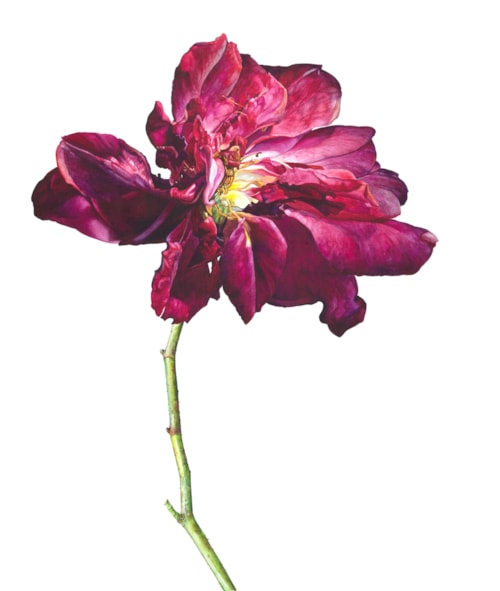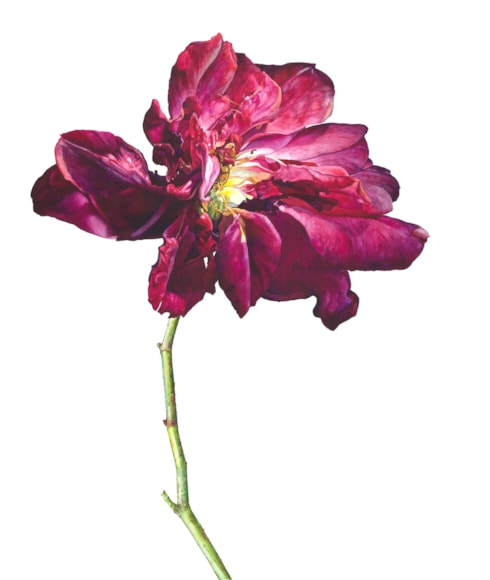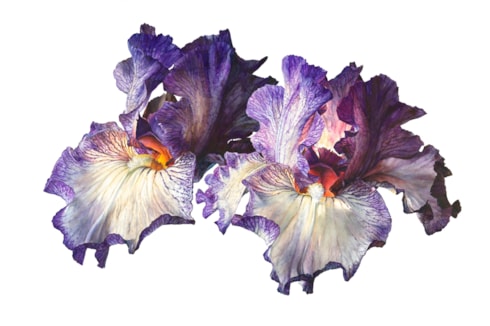
Rosie SANDERS
1944
Biography
A recipient of several awards for her horticultural studies, Rosanne (Rosie) Sanders has developed a reputation as one of the finest botanical artists working today. Apart from taking a foundation course at the High Wycombe College of Art, however, she is largely self-taught as an artist. Sanders started her career as a botanical painter in 1974, soon developing a particular reputation for her striking watercolours of flowers and fruit. She has earned commissions from the late Queen Elizabeth II and Queen Elizabeth The Queen Mother, as well as the Royal Horticultural Society, from whom she has won several gold medals for botanical illustration.
As the collector and scholar of botanical art Shirley Sherwood has written, ‘Rosanne Sanders was introduced to me as the ‘Apple Lady’ because of her superlative studies of fruit.’ In 1988 Sanders wrote and illustrated a book entitled The English Apple, which was followed in 2010 by The Apple Book. In 2015 and 2016 a lavish monograph, Rosie Sanders’ Flowers: A Celebration of Botanical Art, was published in English, German and Spanish editions, while a book devoted to the artist’s watercolours of various types of roses appeared in 2019. In recent years the artist has been working on a series of large-scale monochromatic studies of woodland landscapes drawn in graphite and charcoal. Sanders lives and works in Devon, and has exhibited widely in London and elsewhere during a career that has lasted nearly fifty years. Her work is today in the collections of the Hunt Institute for Botanical Documentation in Pittsburgh and the Yale Center for British Art in New Haven, Connecticut, as well as the Shirley Sherwood Collection of contemporary botanical art at the Royal Botanical Gardens in Kew.
Sanders is best known for her watercolour drawings of flowers, usually on a very large scale. In her studio, she strongly backlights the flowers, the better to capture the translucency and texture of the petals to their full advantage, and often studies them from unusual angles. As the artist has noted, ‘I felt I wanted to be an artist and not an illustrator. It’s part of my nature, I’ve never liked being in a tradition. So I have tried hard to see a different view of a plant…I can’t just sit down and paint me an orchid. It is about my response to the flowers. Something happens when I am painting and it’s not necessarily conscious.’
Elsewhere, Sanders has expounded on her process; ‘I spend a great deal of time thinking about my next painting before I ever begin to put paint to paper…It’s hard to say what I am looking for, or why I choose a particular plant or flower, but I think generally it is shape and colour. It is not of prime concern to me what type the plant is, so while the subjects are plants, the paintings are not botanical in the traditional way. Having said that, it is important that I am true to the nature and form of the plant I have chosen; the paintings have a description of great particularity.’



